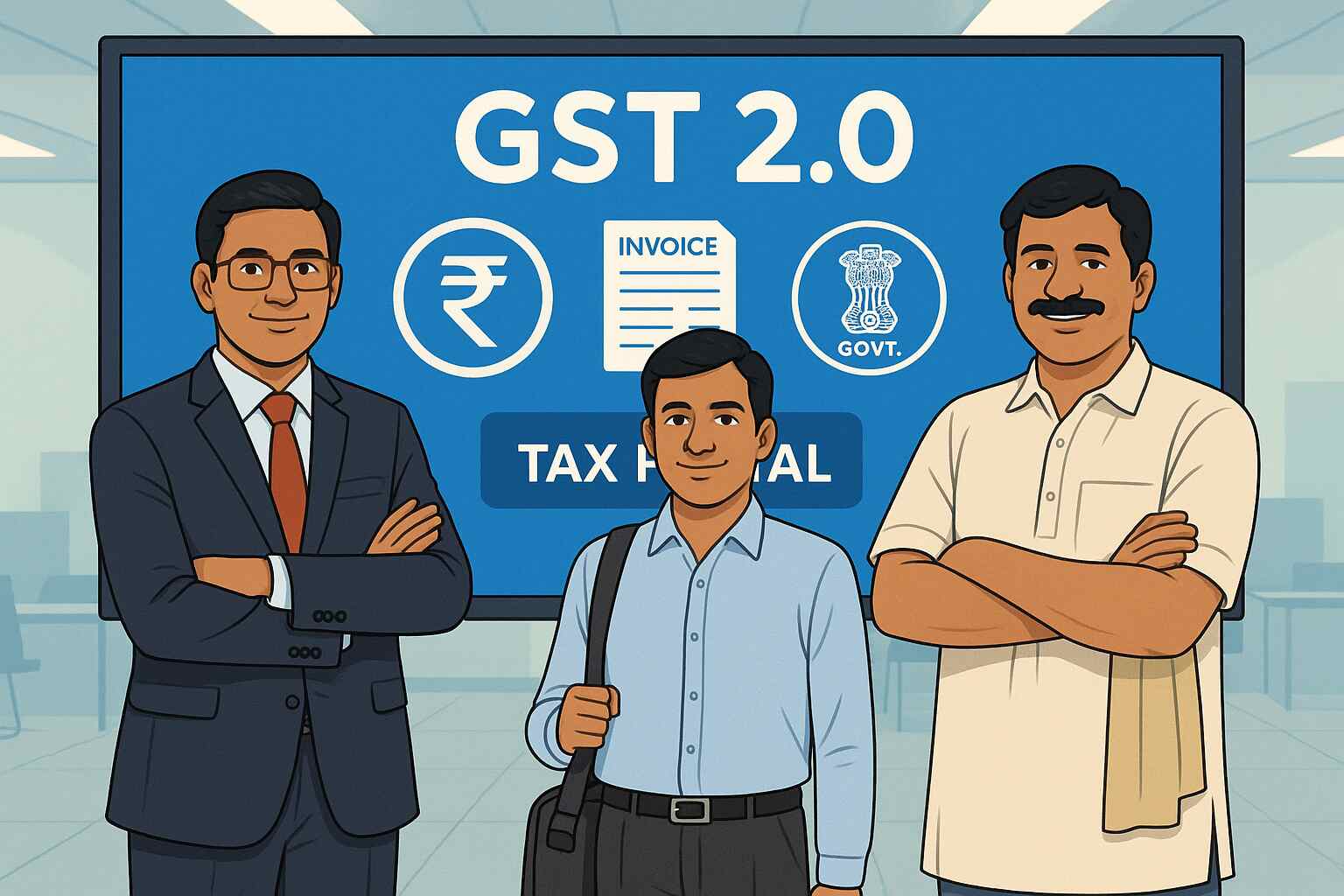If you’ve been following the news lately, you’ve probably heard the buzz around GST 2.0. From your neighborhood vegetable vendor to that software engineer friend in Bangalore, everyone seems to have questions about what’s changing and how it affects them.
The truth is, GST 2.0 isn’t just another government announcement that you can ignore. Starting September 22, 2025, this overhaul will directly impact your grocery bills, business operations, and even that evening salon visit. Whether you’re Rajesh running a small electronics shop in Delhi or Priya, a working professional in Pune, these changes will touch your life in some way.
You can go through GST 2.0 Explained for detailed view or get straight to the answers you’re actually looking for below.
Frequently Asked Questions
1. When do these new rates actually take effect?
All new GST rates are effective from September 22, 2025, just in time for the Navratri and Diwali shopping season.
2. Will I immediately see lower prices in stores?
Most retailers should reflect new prices from September 22. However, it may take a few days for all stores to update their systems and for competition to drive prices down.
3. How much can a typical middle-class family save annually?
Depending on spending patterns, families can save ₹15,000-45,000 annually. Higher-spending families may save even more.
4. What about online shopping – will prices drop there too?
Yes, all e-commerce platforms must implement the new rates from September 22. You might see prices drop slightly on platforms like Amazon and Flipkart.
5. Will construction costs really decrease for my home?
Yes, with cement being a major cost component, overall construction costs could drop by 3-5%. Whether developers pass this benefit to buyers depends on market competition.
6. How does this affect small businesses?
Small businesses benefit from simpler compliance (only two main tax slabs), faster registration, and automated refund processes. This reduces paperwork and improves cash flow.
7. Will luxury items become very expensive with 40% GST?
Luxury cars, tobacco, and premium goods will see a 12% increase in tax rates (from 28% to 40%). However, this affects a small segment of consumers and helps balance government revenues.
8. Do I need to file anything new as a salaried employee?
No. GST 2.0 doesn’t create new filing requirements for salaried individuals. You benefit through lower prices on goods and services.
9. What’s the 40% slab for?
Aimed at sin/luxury goods (certain tobacco/bidi categories, some casino-related services) to replace some previous cess structures.
10. Where to get the official list?
GST Council releases and major newspapers (Economic Times, Indian Express, Times of India) publish final tables and downloadable lists.
11. What happens to goods in transit on September 22?
Existing e-way bills remain valid. check CBIC for updates
12. Can businesses pocket the tax savings instead of passing them to customers?
Technically possible, but market competition usually ensures benefits reach consumers. The government is monitoring this closely.
13. What about my health insurance premiums?
This is huge – individual health and life insurance policies are now completely GST free. If you were paying ₹20,000 annually, you were earlier paying ₹3,600 extra as GST. That’s gone.
14. Will restaurant bills change?
Beauty services like salons, gyms, and spas will now cost less with GST at 5% instead of 18%. However, luxury dining might see mixed changes.
15. Will this help boost the economy?
Economists expect GST 2.0 to add 1-1.2% to GDP growth over the next 4-6 quarters as increased consumption drives demand.
What You Should Do Right Now
If You’re a Consumer:
- Budget better: Factor in the savings on essentials when planning your finances
- Time big purchases: Consider buying that car or AC you’ve been postponing
- Review insurance: If you don’t have health insurance, it’s now more affordable
If You’re a Business Owner:
- Update systems immediately: Ensure your billing software reflects new rates by September 22
- Review contracts: Update pricing agreements with suppliers and customers
- Train your team: Make sure everyone understands the new rate structure
Conclusion
GST 2.0 is not something to fear — it’s designed to simplify life for taxpayers. Whether you’re a small shopkeeper, a salaried professional like Ravi, or a startup founder, the move is about lesser paperwork, smoother compliance, and hopefully, a little relief to our pockets.
What do you think? Will GST 2.0 really make taxes less confusing? Drop your thoughts below and don’t forget to subscribe for more finance explainers on iMoneyMatters.in.
Related Articles
[From Shampoo to Cement: What Gets Cheaper After GST 2.0]
[Will GST 2.0 Make Your Car Cheaper? New Auto & Bike Tax Rate Explained]
